BY JACK EGAN
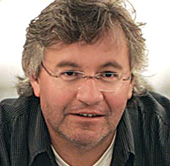
Lee Cleary
Fantastic Four 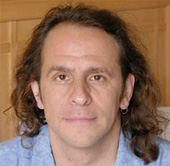
Cliff Lanning
Batman Begins 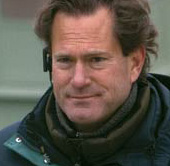
Josh McLaglen
The Island 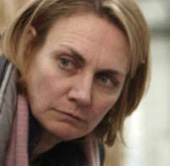
Katterli Frauenfelder
Charlie and the Chocolate Factory 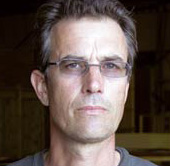
David Webb
Dark Water
Batman Begins, one of last summer's big budget extravaganzas, was prepped with military precision during the film's pre-production phase by Cliff Lanning, 1st Assistant Director and scheduler-in-chief, in close consultation with director Christopher Nolan. But it took only one day of shooting for best-laid plans to melt away.
The first location was the Vatnajokull glacier in Iceland, where a frozen lake was to serve as the setting for some key action sequences. But when Nolan arrived with cast and crew in tow, unseasonably warm weather was threatening to turn the frozen lake into slush. Lanning sprang into action, suggesting rehearsals and color tests be scrubbed so shooting could start instantly. "We went straight to the lake, which was cracking and melting under us during the filming," he recalls, "but we were just in time and what ended up on the screen looked perfect."
Such on-the-spot logistical improvisation is par for the course for a seasoned AD, who knows that during a shoot the unexpected is to be expected. "You start with a plan, but nine times out of ten that plan will change, so you have to be prepared to roll with the punches, run left, right or center, and have the crew and special departments ready to move as well," says Lanning.
If a film in production can be compared to a factory, then the AD is the manager charged with doing everything possible to keep the operation running as efficiently and smoothly as possible. There are no annual awards or stories in magazines ranking the best ADs, but as anyone on the director's team well knows, the AD's role is crucial, especially on one of the complicated summer movies that have multiple moving parts that must be aligned before the director can yell "Action!" To see how they get the job done, we asked five ADs to talk about their craft and their experience on some of last summer's biggest pictures.
Over the past three decades, the summer movie has evolved from the occasional phenomenon to the carefully crafted studio tentpole, laden with special effects. Directors assigned to one of these gargantuan enterprises–a $100 million budget is routine–are asked to steer one of the most complex entertainment products around. "To be sure, the director is still the auteur of the movie," says veteran AD Lee Cleary, who assisted director Tim Story on Fantastic Four. "But I don't know how any director can get through one of these huge visual effects films without an experienced assistant director always beside him."
First and foremost, an AD is the right hand of the director during a shoot, serving as facilitator and factotum. But the AD is also responsible for the whole production and keeping a shoot on schedule and on budget.
The title "Assistant Director" is itself a misnomer. An AD is not an apprentice or director-in-waiting. Few ADs ever become directors. It's not a natural stepping-stone. Since the job is mainly logistical, ADs are more likely to move into some kind of producing role. In fact, a number of top ADs already receive an added producer credit in recognition of their strategic importance.
"As ADs we motivate a unit, we navigate the unit, we're meant to be the pillars of the unit," declares Lanning. "We manipulate and scheme to get things done; we're the confidantes and we're the scapegoats."
The late David Tomblin, considered by many to be the AD par excellence, having assisted many notable directors such as Stanley Kubrick and Steven Spielberg, once suggested that the Assistant Director is "the spine" of a production, "holding it all together" with his or her team.
The interaction between the AD and director is the essential bond, according to Tomblin, who passed away in August. He explained in an interview with the British Academy of Film and Television, which awarded him a BAFTA in 2003 for his special contribution to English cinema: "The key to the relationship initially, is getting into their rhythm, their wavelength. Every director has an individual feel about him. You have to find it and then you can hopefully complement him, make suggestions or help him to move in the direction he wants to go in. Then, if it's all going smoothly, the director should be the last one to interfere. He should be only too pleased that there are no problems."
Cleary, the second assistant to Tomblin for a decade, tries to emulate his mentor's paradigm of facilitator and enabler. He has done heavy lifting on visual effects films including the first two X-Men pictures with Bryan Singer and is currently working on X-Men 3 with Brett Ratner. He runs the gauntlet for the helmers so they get more time to focus on the screenplay and direct the actors. "These days directors, because they have to deal with so many departments like visual effects, don't get to spend as much time with their scripts as they used to," says Cleary. "That's why I don't like to bother them with too many details if I can help it.
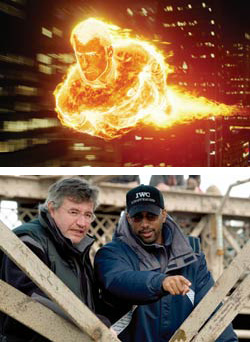 Fantastic Four:
Fantastic Four: Chris Evans ignites as the
Human Torch; Lee Cleary (left), with director
Tim Story, sees his job as motivating
the crew.
"As AD, I tend not to be joined at the hip with the director," he adds. "I split my time between the director and crew and sometimes give more time to the crew. One of the biggest parts of my job is having the crew want to work for us, and that makes it much easier to get things done on the set."
But what takes place on a set has changed: "In the days when I first started the only person who would speak was the director and all the department heads would stand by silently, taking notes," he recalls. "Nowadays you can have 60 or 70 people talking at the same time. On Fantastic Four my job was sometimes to say, 'Shut up guys, let's find out what Tim wants.' I'd spout off some line from X-Men like, 'Once again guys, it's all about you,' and we'd all laugh about it and move on."
Cleary has mastered the intricacies of high-tech action movies by constantly peppering specialist teams with common sense questions. "I never do a stunt or special effects shot until I absolutely understand how it's going to work," he says, "so I can explain it in words of two syllables to the crew and we all know what we're shooting."
That's not always easy. Although filming on Fantastic Four was already under way, the visual effects team was still figuring out how to depict the super powers for some of the quartet, like Sue Storm, played by Jessica Alba. "In one scene she was having a tête à tête with the villain in a restaurant, when she was supposed to go invisible and exit," Cleary recounts. "How invisible was the invisible girl supposed to be? We didn't know whether she became totally invisible, were her clothes visible, did she have a glow around her?" Cleary suggested filming the exit several times, with Alba, and then without her, so what was finally decided on could be added in with computer graphics.
Josh McLaglen, AD on The Island, says the key to his success on the job is to "adapt to the director–each is different." In recent years he's worked with James Cameron on Titanic and Robert Zemeckis on Polar Express (he's currently working with Zemeckis again on another motion-capture movie, Beowulf). On The Island, McLaglen and director Michael Bay were a good match. "The great thing about Michael is he's very collaborative," says McLaglen. "He will sit down and plot with you each play of the game, and he doesn't leave any detail untouched–and I am the same way."
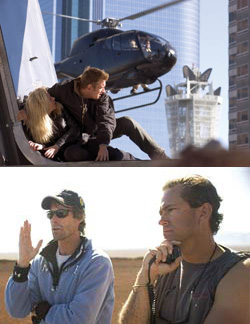 The Island:
The Island: (bottom) Josh McLauglin (right)
with director Michael Bay. "My job is to
orchestrate his vision"; (top) Ewan
McGregor and Scarlett Johansson
get the run-around.
As he breaks down a film, McLaglen hones in on the most demanding scenes, which he labels "complexities." He calls meetings prior to the filming of each of these critical sequences, so everyone involved is completely prepared, from stunt teams to special camera operators.
Bay's movies are "98 percent Michael and the other 2 percent is undecided," he says. "My job is to orchestrate his vision so when he shows up on the set all the resources required are there," he says. Often there's only a single take.
For instance, a climactic chase sequence in The Island called for a car going 60 miles per hour to flip over while the camera followed the crash at the same speed. It was shot from a custom-built truck called the BayBuster, first used by the director on Bad Boys 2, which carried an array of cameras, including a robotic camera that was maneuvered right into the exploding car. To make the shot happen, McLaglen had to arrange for the San Pedro Freeway, near the Port of Los Angeles, to be completely shut down for an entire weekend.
Another important role for the AD is ensuring the well-being of the crew. "My job is to see that it happens spectacularly and that it happens safely," says McLaglen, whose father, the director Andrew McLaglen, started as an AD for John Ford.
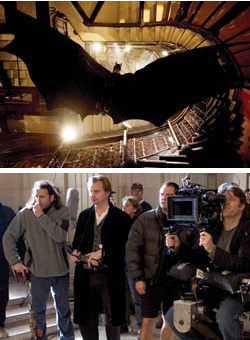 Batman Begins:
Batman Begins: (top) Christian Bale as
the Dark Knight; (bottom) Cliff
Lanning (left), with director
Chris Nolan, says a sense of
humor is most important.
And when nerves fray, the AD is expected to be the one keeping cool, while everyone else may be losing theirs. "We shouldn't be the ones who have a temperamental personality," says Katterli Frauenfelder, who was 1st AD on Tim Burton's Charlie and the Chocolate Factory. "We are the ones that are supposed to make it work." Frauenfelder sees her role as a "communications conduit" for all the collaborators. "We're not there to boss anybody around."
How ADs communicate is important. They emphasize that their job is not to second guess directors or be back-seat drivers. The old role of the sergeant major handing out orders also does not go over well. Lanning's three rules for being a successful AD are "first, have a sense of humor, second, have a sense of humor, and third, treat everyone as you would want to be treated yourself." He recognizes that "so many people out there want to bully or impose their seniority."
When the chemistry is good, a director-AD relationship may last over a number of projects. Lanning was recently AD on The Reaping for director Stephen Hopkins, their seventh collaboration. Lanning was one of the first people Hopkins thanked when he got an Emmy for directing HBO's The Life and Death of Peter Sellers.
In recent years Frauenfelder has been the AD of choice for director Tim Burton. They first hooked up on Planet of the Apes and followed that with Big Fish. "There are shortcuts you have with the director when you work on multiple films together," she notes. "You know how they work and they know how you work." Even longer is her 17-year working relationship with Charlie co-producer Richard Zanuck, which includes three films with director Bruce Beresford, among them the Oscar-winning Driving Miss Daisy.
Charlie "had a long prep and it was needed, because it was one of the most complex films I'd ever worked on," says Frauenfelder. The shoot required all seven of the soundstages at London's Pinewood Studios, including one of the world's largest that has been used for filming James Bond movies. She likens her job to being foreman to an ambitious architect on a landmark structure.
Challenges ranged from supervising construction of a life-size chocolate river and waterfall, to finding someone to coach hard-to-educate live squirrels (the training took over three months), to creating the 165 Oompa Loompas–the pint-sized, singing, dancing candymakers in Willie Wonka's factory. What made it even trickier was that one actor, Deep Roy, played them all. Hundreds of takes were required for the Busby Berkeley-style musical numbers, with each version of the Oompa Loompa doing different dance steps and lip movements. For another scene, Burton wanted 600 extras to stand statue-still as they waited outside the gates of the chocolate factory. Extras who wobbled were replaced by Frauenfelder. Shooting continued as the extras grew more restless, but Burton finally got what he wanted.
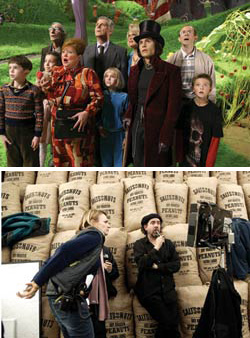 Charlie And The Chocolate Factory:
Charlie And The Chocolate Factory: Frauenfelder and Tim Burton going nuts.
"For ADs all the problems are our problems,"
she says. (top) Johnny Depp and friends.
Though Frauenfelder had a squad of 2nd ADs and production assistants detailed to separate tasks, such as making sure the children in the cast worked only four hours per day, she immersed herself in every detail. "I love to keep my fingers in everything," she says. "Each department has its issues and problems; for 1st ADs all the problems are our problems."
Burton is a very demanding director because he sets very high standards for himself, says Frauenfelder. His vision keeps evolving even after the shoot has started. And he wants to sign off on even the smallest detail. "On a daily basis, and often more than once a day, Tim was meeting with different department heads, who were showing him set designs, props, costumes–everything that was coming up was an evolving process–and he was constantly having to make decisions," she recalls. Meanwhile, he was running the set on a day-to-day basis, and directing all three units.
Some ADs have developed their own specialties. David Webb, who assisted Brazilian director Walter Salles on Dark Water, has a distinct niche. He has worked with numerous independent directors, including many from abroad. Over the years, Webb has assisted for Denys Arcand, Gus van Sant, Francois Girard, Mike Newell and Atom Egoyan, with whom he's partnered on eight films. He was AD on Confessions of a Dangerous Mind for George Clooney, and encored with the actor-director on Good Night, and Good Luck. He's recently been AD for British director John Madden on Kill Shot, a film based on an Elmore Leonard novel.
"[These directors] all work more in the European sense, where an assistant director is that, not an assistant producer," says Webb. "Your job is essentially logistical. But the position has a crossover, artistic side. To help expedite the director's vision you get into his mind, see what he wants, and then help make it happen. It's something that suits my personality." During prep for Dark Water, he became a sounding board for Salles on issues like casting.
With supernatural themes and elaborate water-drenched special effects, Dark Water was Salles' first big-budget studio film. Though released last summer, Dark Water was made before The Motorcycle Diaries, Salles' critically acclaimed 2004 film about the young Che Guevera.
Location work took place in New York City following seven weeks of filming on sets in Montreal, reversing the usual shooting order for a film. Rainmaking towers were at the ready for scenes filmed on Manhattan's Park Avenue, and the script called for a perpetually gloomy atmosphere. Line producer Diana Pokorney and Webb compared forecasts every night. "Walter would not have a rainstorm with hard sun hitting the opposite wall," says Webb. "Sometimes we would wait quite a while, everyone coiled like a spring," he recalls. "The second the sun went behind a cloud or behind a building, it was go, roll it."
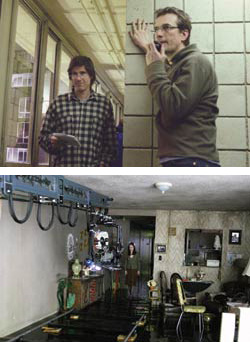 Dark Water:
Dark Water: (top) David Webb (right)
with director Walter Salles. The job is "a
tremendous adrenaline rush. I'm addicted
to it." (above) Jennifer Connelly on
the often-flooded set.
Webb almost passed up the opportunity to work with Salles, who had previously directed Central Station and produced City of God, two of Webb's favorite films. Exhausted from a long stretch of work, Webb agreed to hold a brief courtesy meeting with the director which ended up lasting hours as the two compared favorite films and filmmakers, finding out they had a lot in common. Webb plans to work with Salles on his next film, On the Road, based on the novel by Jack Kerouac.
Although the skills of a top AD don't necessarily translate to being a director, Webb has toyed with the idea, but never gotten around to it. "I thought I'd take a year off and direct something. I know many people in the industry, I could get the money, I'm sure I could do it," he says. "Then Gus van Sant or George Clooney will call and say he's got a new film. And I'm not willing to miss that opportunity. In a way you get to be a junkie to the whole process. It's a tremendous adrenaline boost, and I'm really addicted to it. It's not a lack of ambition staying an AD, it's that I've found something that's so satisfying."
"ADs love the logistics and the planning," adds Lanning. Directors "shouldn't have to worry about that, though they should stay aware of those considerations. As a director, you want to have the broadest possible vision. But if you're constantly thinking of staying on schedule, you won't necessarily want to go that extra mile which may create something magical."
ADs help create the environment that makes that magic possible. The men and women who do the job realize they can't expect much public acclaim because what they do is too behind-the-scenes to be of interest to the average filmgoer. But that doesn't diminish their sense of accomplishment. "Someone has to win the war, and the generals will get the credit," declares McLaglen. "But the Assistant Director is the battle commander who is physically in the trenches winning the war for those generals."
All photos copyright Twentieth Century Fox/DC Comics/Warner Bros/DreamWorks LLC & Buena Vista Pictures)